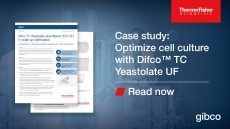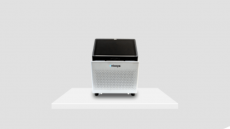Univercells: 'Micro-facilities' to slash the cost of vaccine manufacture

In December last year, Brussels, Belgium-based biopharma firm Univercells received a $12m grant from the Bill & Melinda Gates Foundation to develop production methods to radically lower costs and increasing vaccine availability and affordability in developing countries.
Working with Batavia Biosciences and Natrix Separations, the first target is the inactivated polio vaccine (sIPV) which the consortium hopes to be able to produce at a cost of $0.15 per dose.
This is around a tenth of the cost GSK and Sanofi Pasteur report, Benjamin Damien – business developer at Univercells told Biopharma-Reporter on the back of a presentation he gave last month as to how the vaccine maker hopes to achieve this.
He had told delegates at Biotech Week Boston the project is looking at heavily reducing the heavy CAPEX associated with 80% of today’s vaccine manufacturing. “A $200-500m [investment] is great if you’re GSK, but not so great if you are a smaller player.”
Instead, the project looks to radically change the way vaccines are made. “The aim is to be able to develop such a small process that you don’t need a factory as such,” Damien said. “One cabinet is your cell culture, one for your purification, one cabinet for deactivation all done in a continuous process.”
The “micro-facility” being designed for this project is 1,000m2 flexible facility with two micro-skids, with the ability to deliver 40 million doses based on CAPEX of €10m ($11.8m).
3 pillars
The project is built around three pillars to create what the micro-facility: An optimised cell line, production tech “based on a high-density single-use bioreactor coupled with high affinity purification membranes from Natrix,” and a continuous processing platform.
For the first pillar, selected viral sensitizers and lipid-based viral yield enhancers are added to a WHO Vero 10-87 cell line to increase virus yields, while low serum, or serum-free growth media results in high cell densities. With off-the-shelf products and no genetic engineering, the cell line is optimised while keeping the costs relatively low.
Meanwhile, the firms are evaluating high-density single-use bioreactors with microfibers in place of conventional stainless steel tanks and microcarriers, which according to Damien could increase cell density 20 fold.
The use of purification membranes was introduced in GMP in 2013, and using Natrix’ high-affinity offering hopes to drive three fold productivity over the traditional use of (costly) resin, he added.
Finally, integrating these within an “innovative” platform based on continuous operations, as developed by Univercells, drastically reduces the number of processing steps and the associated costs.
Damien said the classical polio upstream process – as carried out by NVI, GSK, and Sanofi – is a five-week and five-step process, while downstream involves three steps using large-scale clarification and chromatography columns.
Univercells’ process takes three weeks and three steps for the upstream using automated bioreactor operations, while downstream involves two steps at a 100-fold reduction in scale.



















